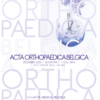Financial implications of the renewed reimbursement system of total hip arthroplasty in Belgium
Hip arthroplasty; health economics; global prospective amount; low variable care; healthcare funding
Published online: Feb 17 2023
Abstract
In Belgium, from June 1st 2018 on, a renewed reim- bursement for hip arthroplasty implants was launched and from January 1st 2019 on, a lump sum covering doctors’ fees for “low variable patients”, was introduced. We investigated the impact of both reimbursement systems on the funding of a University Hospital in Belgium. All patients from the UZ Brussel with a severity of illness score of one or two whom had an elective total hip replacement implanted between January 1st and May 31st 2018, were included retrospectively. We compared their invoicing data to those of patients operated in the same period but one year later. Moreover, we simulated the invoicing data of both groups as if they had been operated in the other period. Overall, we compared invoicing data of 41 patients before and 30 after the introduction of both renewed reimbursement systems. After the introduction of both new laws, we noted a loss of funding per patient and per intervention between 46.8€ and 753.5€ for a single room and, between 105.5€ and 1877.7€ for a double room. We noted the highest loss in the subcategory “physicians’ fees”. The renewed reimbursement system is not “budget neutral”. In time, the new system can lead to an optimization of care, but it can also lead to a progressive decrease of funding if future fees and implant reimbursements would be aligned towards the national mean. More- over, we fear the new financing system could affect the quality of care and/or result in the selection of profitable patients.
